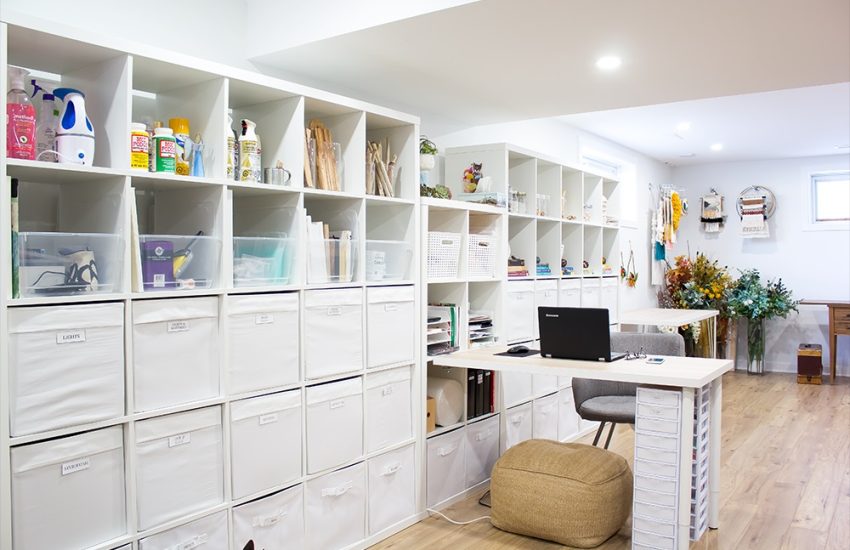What is the difference between a quilt and a duvet?
To quilt or to duvet your bed? Tough decision! When it comes to making your bed, things can get a little confusing. Sheets and pillowcases, even blankets are pretty self-explanatory, but the confusion comes when you have to choose between a quilt and a duvet. Or do you have to choose between them at all? Maybe they somehow go together? See? Confusing!
What’s the purpose of a duvet, and what’s the purpose of a quilt? Are they made of the same materials and are they somehow associated? Are they maybe mutually exclusive?
We are here to answer these, and many other questions you have regarding the difference between a quilt and a duvet.
What’s a quilt?
If we were to define the word “quilt”, we’d say that it’s connected to a Latin word “culcita” which means a cushion or a bolster. However, a quilt is not a cushion at all, but a type of bed cover.
Quilting is a process of joining at least three layers of fabric (two layers of fabric and padding) together. Traditionally, quilts are handcrafted, embroidered from a single piece of fabric or with a patchwork of scrap fabric.
It can be said that quilting is a form of art and can be traced all the way to medieval times. Back then, quilts were used to keep people warm during wintertime. However, a handwoven quilt also tells a story – a story of a person who created it. So, in most cases it’s probably nostalgia that makes us use the quilts as a part of our bedding.
Today, in addition to being used as bedding, quilts are also used as wall hangings, table runners, or table cloths. Some people even use them to reupholster furniture or turn them into purses.
How are quilts made?
Creating a quilt is not complicated at all. What you should know is that depending on their thickness, quilts can be used either during winter or summer.
To create a quilt, one needs at least two types of fabric and padding. Some quilts can feature five to six layers of fabric, but the traditional one is made of two layers plus padding.
Traditionally, the first layer is made of patches of several different types of fabrics stitched into one. This is the part of the quilt that tells the story of the person who made it. It’s this first layer that is colorful, eye-catching, made of different shapes.
The second layer is padding or batting, which is made of cotton or wool filling and it’s this part of a quilt that makes it warm. The third and final layer is usually made of a single piece of fabric that pieces everything together. The stitching you use for this part is what creates that traditional and classic look to a quilt.
Quilt stitches are stitched through all three layers of the quilt in order to hold all of them together. Without them, the quilt wouldn’t last long.
Quilt stitching is either done by hand or with a machine. And while hand quilting allows you to create unique stitches that can’t be replicated by a machine, machine stitching is more durable.
What materials are used for quilts?
You can use several different materials for quilting. To create an interesting, and miss-matched patchwork people use different types of fabrics such as cotton, linen, flannel, voile to name a few. As for stitching, there are three types of hand quilting stitches used: tying, sashiko, and conventional.
Types of quilts
There are also four types of quilting techniques used to create quilts. Those techniques include pieced, appliqued, paper pieced, and English paper pieced. Each of these techniques can help you create a unique quilt.
By using any of these techniques you can create a beautiful kids’ quilt cover, a table cover or a runner, wall art, or whatever you want really.
How to wash a quilt?
Quilts don’t require a cover, but that only means that they should be washed. You can either choose handwashing or machine washing for your quilt. If you have vintage, hand-made, or appliqued quilts, the best would be to handwash them.
When it comes to drying, you can use either machine drying, air drying, or a combination of both. And once again, vintage, hand-quilted, or appliqued quilts should be air-dried to avoid shrinkage or any other potential problems.
What’s a duvet?
The word duvet is of French origin, meaning “down”. Duvets originated in rural Europe and were warm cloth blankets filled with the down or feathers of ducks or geese. Basically, a duvet is a flat pillow, that you cover yourself with.
What we today call a duvet is actually a duvet cover, and the duvet is an insert that goes inside that cover. The duvet can’t be used without the cover if you want it to last longer. Without the cover, a duvet is simply two pieces of fabric stitched together and filled with feathers or some other synthetic alternative.
We can say that a duvet is almost like a modern substitute for a quilt, but that is where their similarities end.
How are duvets made?
As mentioned, duvets are two pieces of fabric sewn together and stuffed with some sort of insulating material – either down, feather, or synthetic fibers. Since it’s insulating and fluffy, a duvet is designed to lay on top of your bedsheets and keep you warm at night.
Duvets and their cover are popular bedding styles in Europe, and in the past couple of decades, they’ve gained popularity in the US as well.
When you have a duvet, you don’t need a ton of different bedding. During the winter if you have a duvet, a quilt and a comforter are not necessary.
What materials are used for duvets?
When it comes to duvets, the most important materials are those used for their filling. Back in the days, duvets were stuffed with either goose or duck down or feathers. Today, silk, cotton, wool, or some artificial fibers are also utilized as duvet stuffing.
This stuffing is what keeps you warm, and when choosing a duvet you should pay attention to a duvet’s tog rating. The higher the tog rating, the warmer the duvet, with 2.5 – 7 tog perfect for spring and summer and 10.5 – 13.5 ideal for autumn and winter.
You should also pay attention to the fill power and weight of a duvet. Fill power refers to the filling’s insulating ability and fill weight to the weight of the duvet. Keep in mind that a heavy duvet doesn’t mean a warmer duvet, it’s the fill power that indicates the quality and effectiveness of the filling.
Duvet covers
If you have a duvet, a duvet cover is a must because cleaning a duvet can be expensive and difficult. A duvet cover is made to slip over the duvet and close either with a zipper or buttons, or some other way.
Duvet covers are used because they are easy to remove from the duvet and even easier to wash. Duvet covers come in a variety of materials, colors, and patterns. For example, some of the most commonly used fabrics for duvet covers include flannel, cotton, linen, organic cotton, and supima cotton.
It’s the aesthetic side of the duvet covers that makes people settle for either one of these options because covers can make a beautiful visual statement in any bedroom.
Duvets are easy to care for
Compared to quilts, duvets require less maintenance. Since duvets have their covers, you don’t need to worry about them. That’s exactly the point of covers, to keep your duvet clean and protected. As already mentioned, cleaning duvets can be a difficult and expensive endeavor, so putting them in covers is the right and much simpler way to go.
And covers, you can simply put in a washing machine, then a drying machine, and simply store them away or reuse them again.
The main differences between a quilt and a duvet
What we can take from all of this is that both quilts and duvets are bedding toppers, however, that’s where their similarities end.
Quilts are lightweight and cool, ideal for summertime. They are interesting, colorful, and they are also an ideal solution for a layered bedding look. For some people, quilts also carry a sentimental value, they remind them of a person who made it, or of their childhood.
Duvets, since they are warmer than quilts, are perfect for wintertime. They don’t necessarily fit the layered look vibes, but you can style a blanket over them. Duvets, on the other hand, are perfect for a minimal look.
All in all, whether to choose a quilt or a duvet, depends on your preferences and your sleeping style. If you like to stay warm and toasty when you’re sleeping – the duvet is for you. In case you like to stay cool when sleeping or you don’t mind all the layers, opt for a quilt.
Another thing that can help you choose either of these bedding toppers is your personal style or the style of your bedroom. Which one fits your space best?




